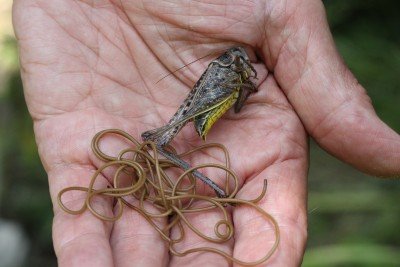
Wolf worms, or *larvae of the species Cuterebra*, are fascinating parasites that often target mammals. They have a unique life cycle and relationship with their hosts, which makes them both interesting and somewhat mysterious. Here, we’ll dig deeper into the world of wolf worms and explore whether we can conduct research on them while ensuring the safety and wellbeing of their hosts. You might be wondering how that’s even possible, but stick around; I promise it’ll be worth it!
What Are Wolf Worms?
Wolf worms are the larval stage of the botfly species *Cuterebra*. These parasites primarily infect small mammals, like rabbits and squirrels, but they can also find their way into other hosts, including pets like cats and dogs. Here’s where it gets interesting: once they find a host, they burrow under the skin to grow and develop.
This relationship isn’t one-sided. While wolf worms benefit from their hosts, they can also cause discomfort and health issues. For example, if a larva becomes too large or if the host has a reaction to it, this could lead to infections or even serious health problems. Therefore, understanding wolf worms is crucial—not just for scientific purposes but also for wildlife management and pet care.
Why Study Wolf Worms?
Studying wolf worms can provide insight into parasitism, host defenses, and ecosystem dynamics. These little creatures can be seen as indicators of environmental health, much like how canaries were used in coal mines. By observing wolf worms and their impacts, researchers can learn how ecosystems function and respond to changes.
Additionally, there’s a critical need to explore alternative treatment methods for infected hosts. Understanding the life cycle and behavior of wolf worms can inform veterinary practices, helping to develop better preventive measures. For instance, knowing when and where these larvae are likely to infest can help pet owners take proactive steps to protect their furry friends.
Can We Study Them Without Causing Harm?
This is the golden question. Traditional research methods often involve capturing or even killing host animals, which raises ethical concerns. However, advances in technology and research techniques offer some exciting alternatives. Non-invasive methods can be employed to study wolf worms and their effects on hosts.
Techniques like **ultrasound imaging** allow researchers to see inside a host without any physical harm. This can provide valuable information about the location and size of the larvae, along with the host’s health status. **Observation** can also be invaluable; by watching infected animals in a natural setting, researchers can collect data without disrupting their lives.
Ethical Considerations in Research
When it comes to studying living creatures, ethics play a crucial role. Many researchers are now prioritizing humane methods to ensure that their work doesn’t harm wildlife. The shift toward ethical research isn’t just about compliance; it also reflects a broader understanding of our responsibility toward the natural world.
By emphasizing non-invasive techniques, researchers can gather essential data while minimizing stress on the host animals. This approach not only helps us learn more about organisms like wolf worms but also fosters a more compassionate view of research. It’s about finding a balance between scientific inquiry and respect for life.
The Role of Technology in Studying Wolf Worms
Technology has opened doors for researchers interested in studying parasites like wolf worms in innovative ways. One ground-breaking advancement is the use of **DNA barcoding**, which allows scientists to identify species without needing physical samples. This technique offers a way to study wolf worms and their life cycles through genetic analysis, rather than extracting them from their hosts.
Additionally, researchers are using drones equipped with cameras to monitor wildlife in their natural habitats. This method provides insights into infection patterns and host behavior without the need for direct interaction. The use of technology not only improves the quality of research but also addresses ethical concerns, leading to a win-win situation for scientists and the environment.
Impacts of Wolf Worm Studies on Wildlife Management
Understanding wolf worms and how they affect hosts can significantly influence wildlife management strategies. By identifying patterns in wolf worm infestations, wildlife managers can develop targeted interventions. For instance, if certain environmental conditions lead to higher infestation rates, steps can be taken to mitigate those conditions.
Moreover, educating pet owners about the signs of wolf worm infestation can lead to earlier detection and treatment. This can drastically improve outcomes for pets and prevent more severe health issues. Ultimately, studies focused on wolf worms contribute to a broader understanding of wildlife health and ecosystem balance.
Studying wolf worms doesn’t have to mean harming their hosts—thanks to innovative technologies and a shift in ethical thinking. By employing non-invasive methods and embracing the role of technology, researchers can deepen their understanding of these fascinating parasites while prioritizing the wellbeing of their hosts.
So, as we move forward, let’s embrace a future where curiosity and compassion walk hand in hand. The natural world has so much to teach us, and it’s up to us to ensure that we learn from it without causing harm. In this way, our explorations can be both enriching and respectful, paving the way for a deeper appreciation of all creatures—no matter how small they may be.
